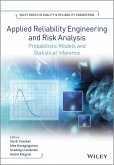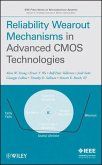Practical tools for analyzing, calculating, and reporting availability, reliability, and maintainability metrics Engineers in the telecommunications industry must be able to quantify system reliability and availability metrics for use in service level agreements, system design decisions, and daily operations. Increasing system complexity and software dependence require new, more sophisticated tools for system modeling and metric calculation than those available in the current literature. Telecommunications System Reliability Engineering, Theory, and Practice provides a background in reliability engineering theory as well as detailed sections discussing applications to fiber optic networks (earth station and space segment), microwave networks (long-haul, cellular backhaul and mobile wireless), satellite networks (teleport and VSAT), power systems (generators, commercial power and battery systems), facilities management, and software/firmware. Programming techniques and examples for simulation of the approaches presented are discussed throughout the book. This powerful resource: * Acts as a comprehensive reference and textbook for analysis and design of highly reliable and available telecommunications systems * Bridges the fields of system reliability theory, telecommunications system engineering, and computer programming * Translates abstract reliability theory concepts into practical tools and techniques for technical managers, engineers and students * Provides telecommunication engineers with a holistic understanding of system reliability theory, telecommunications system engineering, and reliability/risk analysis Telecommunications System Reliability Engineering, Theory, and Practice is a must-have guide for telecommunications engineers or engineering students planning to work in the field of telecommunications Telecommunications System Reliability Engineering, Theory, and Practice is a must-have guide for telecommunications engineers or engineering students planning to work in the field of telecommunications.
Dieser Download kann aus rechtlichen Gründen nur mit Rechnungsadresse in A, B, BG, CY, CZ, D, DK, EW, E, FIN, F, GR, HR, H, IRL, I, LT, L, LR, M, NL, PL, P, R, S, SLO, SK ausgeliefert werden.
"For that reason, this book will be very useful for undergraduate students and practitioners who need a good introduction to, or a refresher on, the reliability aspects of the networks they work with." (Computing Reviews, 14 January 2013)
"This well-organized book compares and contrasts the reliabilities of corresponding components that make up today's major networks as well as the reliability of facilities used to operate them." (Optics & Photonics News, 1 November 2013)
"This well-organized book compares and contrasts the reliabilities of corresponding components that make up today's major networks as well as the reliability of facilities used to operate them." (Optics & Photonics News, 1 November 2013)









